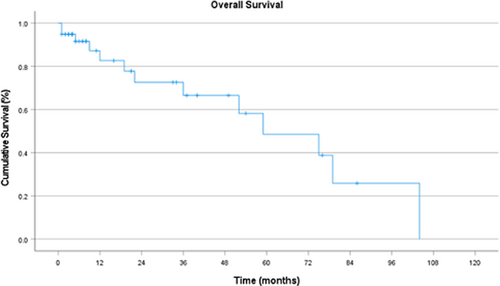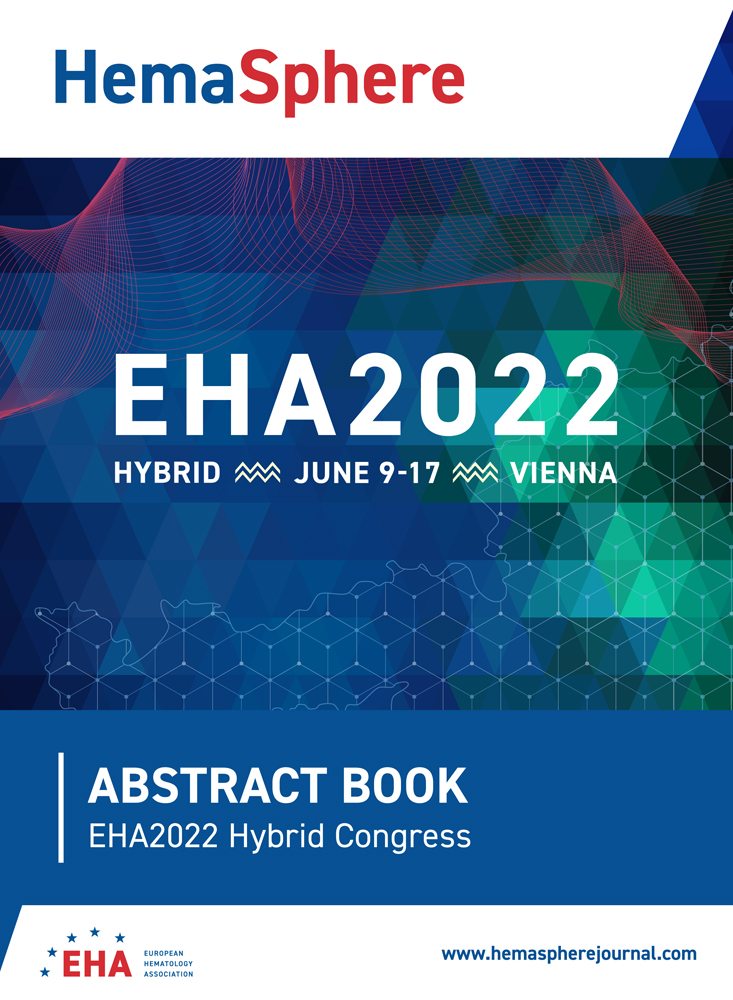PB2104: DOSE-DENSE CHEMOTHERAPY WITH R-CHOP-14 IN OLDER ADULTS AGED ≥80 YEARS WITH DIFFUSE LARGE B-CELL LYMPHOMA
Background: Diffuse large B-cell lymphoma (DLBCL) is the most common lymphoma subtype. Approximately 29% of patients with DLBCL are ≥75 years old. Treatment with the RCHOP regimen is standard of care and can be administered either every 3 weeks (RCHOP-21) or dose-dense biweekly (RCHOP-14). The RICOVER-60 trial showed excellent outcomes with RCHOP-14 in patients aged 60-80 years. In patients ≥80 years, attenuated dose regimens are preferred. Insufficient data are available concerning the use of RCHOP-14 in patients aged ≥80 years.
Aims: To evaluate dose dense RCHOP-14 in patients with DLBCL aged ≥80 years.
Methods: We performed a single center retrospective analysis of patients with DLBCL aged ≥80 years treated with RCHOP-14 at Saarland University Medical Center from 2005 to 2017. Baseline patient characteristics, dose intensity and treatment outcomes were extracted from hospital medical electronic records. Relative dose intensity (RDI) was calculated as the percentage of the dose intensity achieved divided by the intended dose intensity. Primary endpoints were overall (OS), progression-free (PFS) and event-free survival (EFS), defined as time from diagnosis to death, death or progression/relapse, progression/relapse or treatment discontinuation. Statistical analyses included descriptive statistics, Cox regression and Kaplan Meier estimates.
Results: We identified 58 patients. Of them, 19 patients were excluded (primary CNS lymphoma: n=5, no rituximab: n=3, only palliative therapy: n=5, bendamustin: n=1, RCHOP-21: n=2, death during prephase treatment: n=2, missing documentation: n=1). In total, 39 patients (67%) received at least one cycle of RCHOP-14 and were selected for further analysis. Median age was 83 years (80-91) and 61.5% of patients were female. Eastern cooperative oncology group performance score (ECOG-PS) was ≥2 in 54.1% of patients. Charlson's comorbidity index (CCI) was ≥2 in 38.5% of patients. International prognostic index (IPI) was ≥3 in 54% of patients and 67% had stage III-IV disease. The overall response rate was 93.3%. Rates of complete remission (CR)/unconfirmed CR were 80% and partial remission were 13.3%. With a median follow-up of 21 months, the 2-year OS, PFS and EFS estimates were 73%, 59% and 38% respectively. Treatment-related mortality was 7.6%. Treatment was discontinued early due to toxicity in 11 patients (28%) with a median number of 6 (2-6) chemotherapy cycles in the overall cohort. Mean RDI was 80.3%, and RDI did not correlate with OS (p=0.32). In the multivariate analysis, there were significant associations of OS with CCI (p=0.043, relative risk [RR] 0.36, 95% confidence interval [CI]= 0.13-0.97) and age (p=0.048, RR 0.60, 95%CI= 0.36-0.97). Female sex and higher ECOG-PS were associated univariately with worse EFS (p= 0.003, RR 22.1, 95%CI= 2.79-175.7 and p=0.001, RR 4.14, 95%CI= 1.75-9.89). A serum albumin level of ≥3.5 g/dl was associated univariately with improved PFS (p=0.043).
Image:
Summary/Conclusion: This report demonstrates feasibility of RCHOP-14 in selected octogenarians with DLBCL. Despite relative high treatment discontinuation rates, adequate RDI levels were achieved and TRM did not exceed that reported for attenuated regimens in previous prospective trials. Better outcomes were achieved in male patients without comorbidities, a serum albumin level of ≥3.5 g/dl and a good performance status. Even though this is a retrospective single center analysis, the excellent outcome reported here suggests that advanced age alone does not preclude application of dose dense chemotherapy with curative intent in selected patients of this high-risk group.





